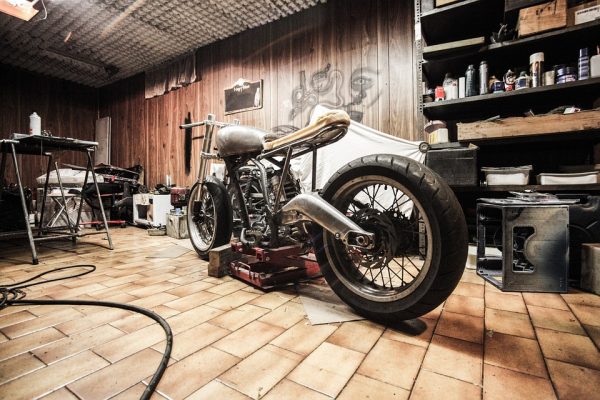The Steps To Install Polystyrene Insulation
Polystyrene sheet insulation can help you to reduce your energy bills and increase the comfort of your home. However, it is important that you know how to prepare for the installation of the sheets on a concrete wall, how to cut them and how to fix them correctly. While there are a lot of materials that you can use to insulate your home, polystyrene sheets provide several benefits.

Despite commonly held views, polystyrene is a very effective insulator for your home and it is gaining popularity. This is primarily due to the sheets offering fire-resistant versions, reducing noise pollution from the exterior of the house and low maintenance costs.
The thermal resistance of these boards is also very high which means that you are going to be saving a lot of money on your energy bills. On cold nights, you will be able to reduce energy consumption by 50% while still enjoying a warm internal climate. When increasing the thickness of the polystyrene boards, you will improve the thermal resistance. This is why you are able to choose between varying thicknesses when you buy the sheets.
It is also possible to finish polystyrene insulation with different textures. This means that you can choose the best model to suit your tastes and needs. In order to do this, you will need to apply 2 layers of putty to the insulation and then use a decorative paint.
Investing in polystyrene insulation is a good idea, particularly with energy costs constantly on the rise. Your house value will also increase because it will be more energy efficient. Another benefit of this insulation is the fact that you are able to install it yourself
In order to install the insulation yourself, you will need to following:
• Polystyrene sheets
• Dowels for polystyrene
• Polystyrene adhesive
• A rubber hammer
• A utility knife
• Safety gloves and glasses
• Drill with drill bits and mixer
• A measuring tape
• A framing square
• A pencil
• A handsaw
• A bucket
• A ladder
Preparing The Adhesive
To prepare the adhesive for the boards, you will need to use the bucket. The mortar which needs to be prepared has been created for the adhering of polystyrene to concrete walls. To start, you need to fill the bucket 1/3 of the way with water. You should then add the premixed polystyrene adhesive material.
A good tip is to leave the bucket with the adhesive for a few minutes before you mix it. This will allow you to get a better adhesive in a shorter space of time. This is due to the water activating the molecules in the mixture.
The adhesive will need to be thoroughly mixed to enable it to fix the boards to the concrete. There are 2 methods that you can use to do this. The first is manually with a trowel and the second is mechanically with your drill mixer. Using the drill mixer will make the process easier and quicker.
You will then have to use a towel to apply the adhesive to the edges of the boards. The adhesive should be no more than 1 inch thick or you will not be able to fix the boards correctly. Having an even layer of adhesive will also ensure a uniform layer on the wall. If the surface you are installing the boards on is completely level, you can apply the adhesive to the entire board and spread with a comb trowel.
If the wall has a lot of irregularities, you will need to apply the adhesive to the boards. Six mounds of adhesive to each of the sheets is all that you need. Of course, the mounds will need to be symmetrical and have the same volume.
Installing The Sheets
Once the adhesive has been applied to the boards, you will be able to install them on the wall horizontally. It is recommended that you start installing from the bottom corner of the wall using a full sheet. As you install them, you need to ensure that they are perfectly aligned.
You will then have to gently press on the boards to lock them onto the wall. Once you have done this, use your level to check that the wall is level. You do not want to allow the adhesive to dry before checking this as it will be impossible to repair the error.
You should then continue installing the sheers until you reach the end of the row. The edges of the boards will need to be aligned to ensure that the job appears professional.
If you find that the installation is difficult, you may want to leave this to a qualified professional. However, if you want to do this yourself, asking a friend for some help is recommended. It is impossible for most people to prepare the adhesive and install the boards at the same time. A friend will also help the installing go faster as it can take a lot of time if you have a large surface.
The second row of sheets should be installed vertically. This will provide better strength for the insulation. You will have to be careful and ensure that the boards are all level and aligned. If you need a smaller piece of board, you should use your handsaw to cut the sheet. The gaps between the sheets should also not be very large.
You will need to continue preparing your adhesive and installing the sheets until you have covered the entire wall. The pattern of horizontal then vertical will make the insulation stronger. If you need to install the sheets at an inaccessible height, you need to make use of a folding ladder. When you use the ladder, you need to ensure that it is firmly placed and stable.
Once you have finished installing the sheets along the entire exterior of your home, you should leave it that way for a few days. This will give the adhesive time to dry. If you do not allow this, you will damage the boards and they will no longer be aligned.
Securing The Insulation With Dowels
Once you are sure that the adhesive has dried, you can drill holes through the insulation and install the polystyrene dowels. To make these holes, you will need a good drill that also has a hammer function. A #10 drill bit is also required to make the right holes in the concrete wall.
The hole you make should be 2 to 3 inches longer than the thickness of the polystyrene sheets. If you do not do this, you will not be able to properly install the dowels. To clean the hole of any residue, you will need to drive the drill back and forth several times.
The dowels should be installed at the intersection of the boards’ corners and in the middle of all the sheets. Of course, you should refer to the instruction provided by the manufacturer as this might differ. Generally, the dowels should be inserted using your bare hands, but if you have problems a hammer can be used. However, you should not apply too much force as this could damage the head of the dowel.
Once the dowel has been installed, you can insert the plastic screw. To do this, you will need to use your rubber hammer or mallet. To start, you need to position the screw in the dowel by hand and then lock it in place with the hammer. When you do this, you also need to ensure that the head of the dowel and plastic pin are in line with the surface of the boards as this ensures a good finish.
You will need to continue installing the dowels and plastic pins until you have secured all of the boards. It is important that you work methodically and pay close attention to the details. You also need to check that all of the dowels are properly secured because when they are not your insulation will only last one season.
You also need to ensure that there are no gaps between the boards as this lowers the thermal resistance of the insulation drastically. If there are gaps, you can use a polystyrene foam between the sheets to solve the problem. To make the surface even, you will need to use a cutter.
The last task to complete is to clean the adhesive residues. The surface of your boards will need to be plane, level and without any adhesive residue. All of your tools will also need to be thoroughly cleaned after the installation.
Polystyrene installation is something that you are able to do yourself. Knowing the steps will help you achieve a level and professional installation. However, if your installation is at heights that you are not comfortable with or you find DIY installation too difficult, you should consider calling a professional to complete the installation.
